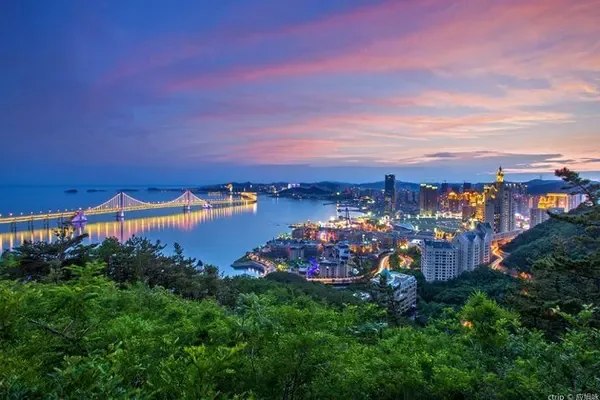Tibet is a very mysterious and beautiful place. To travel to Tibet, you must know what attractions are there in Tibet. Tibet's scenic spots are divided into two aspects: cultural landscapes and natural scenic spots. The cultural attractions are mainly distributed in the Lhasa River Shigatse area, while the natural scenery is distributed in Nyingchi and Shannan areas. Therefore, according to your needs to choose the focus of the tour, here are a few scenic spots in Tibet that are briefly recommended for you.
Potala Palace
Commonly known as the "Second Putuo Mountain", the Potala Palace is a large-scale castle-like building complex. It was originally built by Songtsan Gampo to marry Princess Wencheng. After reconstruction in the 17th century, the Potala Palace became the winter palace residence of the Dalai Lamas of all dynasties, and also the center of theocratic rule in Tibet. The whole palace has a distinctive Tibetan style, built on the hillside, with a majestic momentum. There are countless treasures in the Potala Palace, which can be called a palace of art. In Tibet's historical inheritance, the Potala Palace plays a very important role, and it is the precipitation of Tibetan history and culture.
Barkhor Street
Located in the old city of Lhasa, it is a famous turning point and commercial center in Lhasa, and it has relatively completely preserved the traditional appearance and living style of the ancient city. Barkhor Street is a polygonal street ring composed of Barkhor East Street, Barkhor West Street, Barkhor South Street and Barkhor North Street. The circumference is about 1,000 meters.
The original street of Barkhor Street is just a single turning road around the Jokhang Temple, which is called "Holy Road" by Tibetans. Now it has gradually expanded into a large area of old-fashioned old blocks around the Jokhang Temple. Bajiao Street is the most prosperous commercial street in Lhasa built around the Jokhang Temple. The street is centered on the Jokhang Temple, connected to the Tibet Hospital Building in the west, Yanhe East Road in the south, Xingfu East Road in the north, and Helinguo East Road in the east.
Nam Co
Namtso is the second largest saltwater lake in China. "Namtso" is Tibetan, and the Mongolian name of this lake is "Tengri Sea", both of which mean "heavenly lake". It is also the highest saltwater lake in the world. There are more than 1,500 large and small lakes. It is located between Damxung County in the north of Lhasa and Bango County in Nagqu Prefecture. It is north of the main peak of Nyainqentanglha Mountain, 240 kilometers away from Lhasa. The shape of the lake is approximately rectangular, the maximum depth is 33 meters, and the water storage capacity is 76.8 billion cubic meters. It is the largest large lake with the highest altitude in the world.
Ramoche Temple
Ramoche Temple Tibet Autonomous Region is located in the northeast of Lhasa City, about 500 meters north of Barkhor Street. Ramoche Temple, also known as Shangmiyuan, is called "Judui Bazacang" in Tibetan, and it is one of the highest institutions of Tantric Buddhism of the Gelug Sect of Tibetan Buddhism. According to legend, it was started, completed and consecrated at the same time as the Jokhang Temple. Ramoche Temple covers an area of 4000 square meters. It is said that it was presided over by Princess Wencheng and built by an architect brought by the princess from the mainland, so the early architecture of Ramoche Temple imitated the style of Han and Tang Dynasties. The gate faces east to express the princess's longing for her parents in her hometown. The name of the temple is "Jiada Remuqi Zulakang", which means "Hanhu God Transformation Temple". The locals in Lhasa call it "Remuqi", which means "of the Han people".
Yamdrok Yongcuo
Yamdrok Yongcuo, referred to as Yanghu Lake, is known as the three holy lakes in Tibet together with Namtso and Manasarovar. It is the largest inland lake at the northern foot of the Himalayas. The beauty of the lake and mountains is the best in southern Tibet. Located in Langkazi County, Shannan Prefecture, Tibet, more than 70 kilometers southwest of Lhasa City, with an area of 678 square kilometers and an altitude of 4,441 meters. To get from Lhasa to Yanghu Lake, you need to cross the 5,030-meter Gangbala Pass.
Lalu Wetland
The Lalu Wetland National Nature Reserve has a total area of 6.2 square kilometers and an average altitude of 3645 meters. It is a typical wetland on the Qinghai-Tibet Plateau and belongs to the reed peat swamp. The humid climate and abundant aquatic plants here are very rare on the plateau. Every year, a large number of wild birds such as ruddy shelduck, yellow duck, Tibetan sandgrouse, bar-headed goose, brown-headed gull, hoopoe, lark and skylark are attracted. There are also a small number of black-necked cranes, which are national first-class protected animals, playing here. This urban natural wetland with the highest altitude and largest area in the world is also the only urban inland natural wetland in China.

